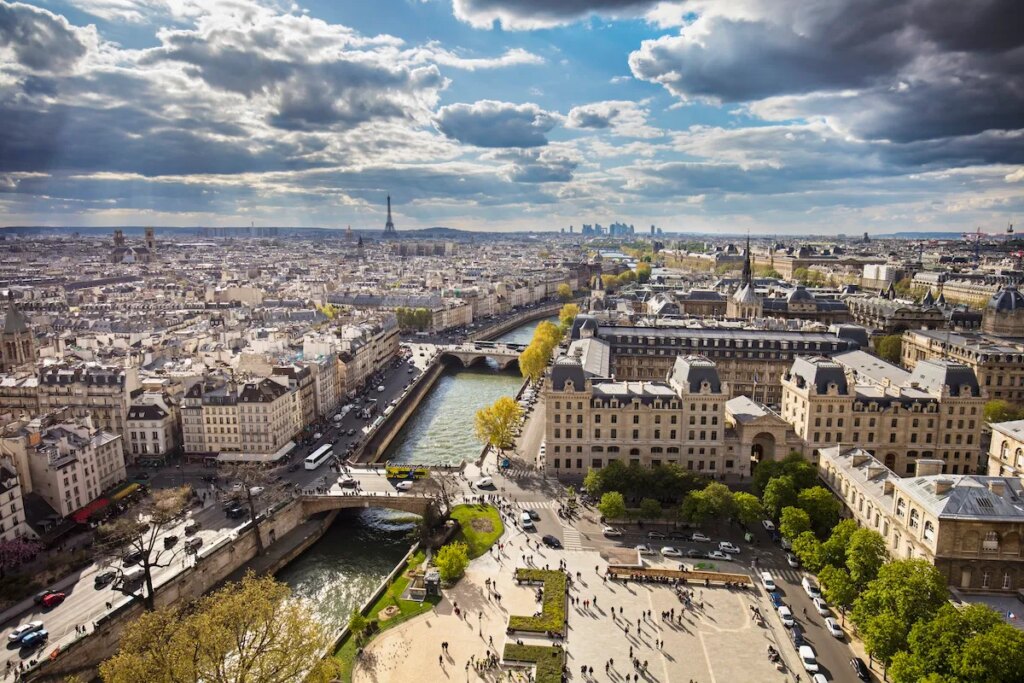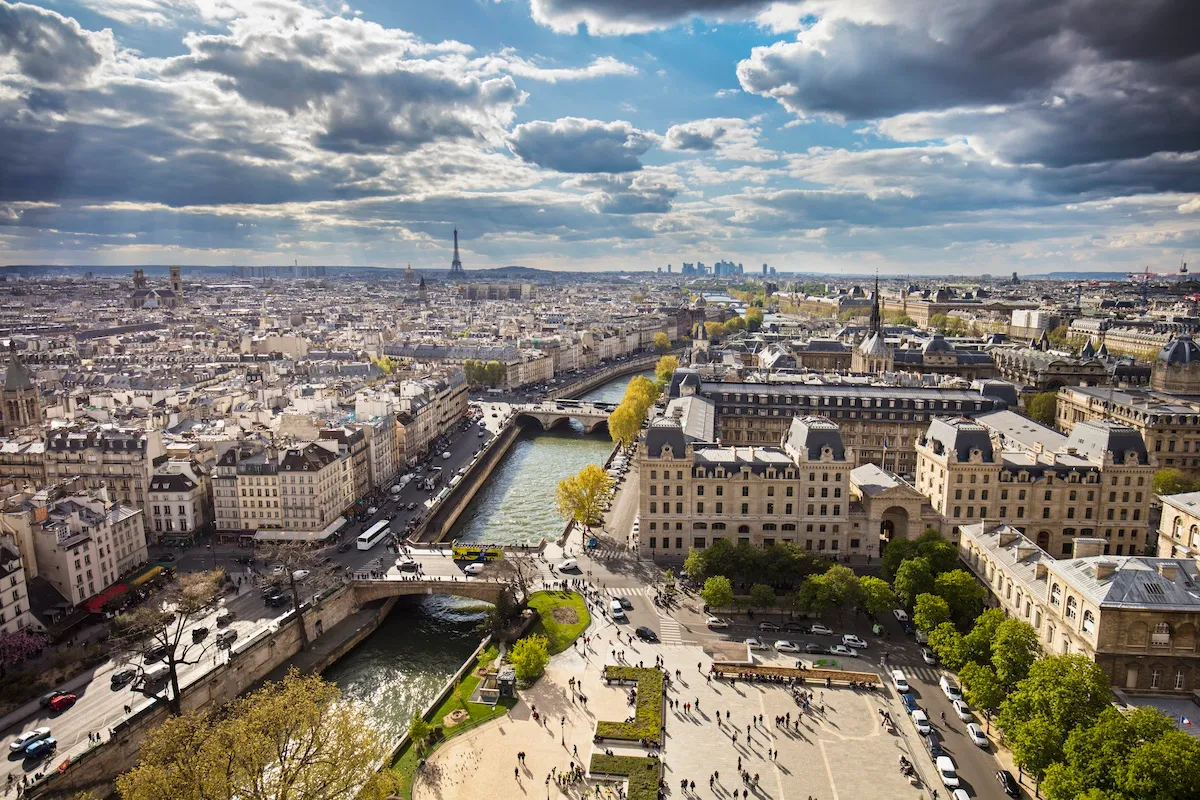
Paris, the City of Light. Millions of travelers perceive it as an ideal destination. With structures spanning the Middle Ages (Abbey of Saint-Germain-des-Prés) to the 21st century (Frank Gehry’s Louis Vuitton Foundation), Paris offers a way to time travel through beauty in art and architecture. It is the birthplace of Gothic and Art Deco styles, and even of postmodern aesthetics. The Notre-Dame Cathedral of Paris (built between 1163 and 1345), recently risen from the ashes; the Dôme des Invalides (1677–1707); the École Militaire (1751–80); the Palais Garnier (1861–75); the Eiffel Tower (1887–89); and the recently revamped Grand Palais (1897–1900)—are all considered masterpieces in an open-air museum as large as the city itself.
Within Paris thrive about 200 institutions, each with a collection of its own. “One of my favorite things about Paris is the concentration of cultural hot spots,” says French artist and academician Jean-Michel Othoniel. Opposite the Musée du Louvre and its 38,000 works of art stands the Musée d’Orsay, known for its Impressionist treasures. Further along the Seine are the Petit Palais, the Musée d’art moderne de Paris, and the Palais de Tokyo. On opposing corners of the Tuileries Garden are the Jeu de Paume and the Musée de l’Orangerie. They are all among our picks of the 23 best museums in the Ville Lumière.
-
Musée du Louvre
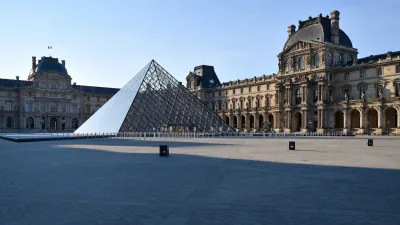
Image Credit: Frédéric Soltan/Corbis via Getty Images. Who hasn’t heard of the Louvre? Situated on the Right Bank of the Seine, it is one of Paris’s most famous landmarks. The original Louvre structure began as a fortress built in the late 12th century; King Francis I began converting it in 1546 into a royal palace, which it remained until Louis XIV chose to move to Versailles in 1682. Subsequent monarchs expanded and updated the structure several times over the centuries. Then, following decades of proposals and small moves toward fulfillment, it was during the French Revolution that the Louvre at last became a museum, opening in 1793.
Comprising eight curatorial departments—Egyptian Antiquities; Near Eastern Antiquities; Greek, Etruscan, and Roman Antiquities; Islamic Art; Sculpture; Decorative Arts; Paintings; and Prints and Drawings—the Louvre is an amazing multistory maze of galleries, passageways, staircases, and escalators adorned with a courtyard topped with a glass and metal pyramid designed by Chinese American architect I.M. Pei in 1988. With 652,300 square feet and about 9 million annual visitors all eager to get lost in it, the site is the largest and most visited museum in the world. It is home to some 38,000 artworks and artifacts from prehistory to the 21st century, including Leonardo da Vinci’s often photo-bombed Mona Lisa, Alexandros of Antioch’s Venus de Milo, and Eugène Delacroix’s Raft of the Medusa. A ninth department, featuring Byzantine and Eastern Christian Art, will debut in 2027. It is impossible to see the entirety of the collection in one day, so plan to come back, often.
-
Musée d’Orsay
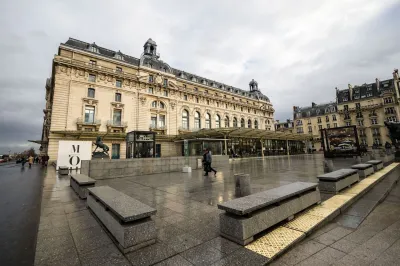
Image Credit: Edward Berthelot/Getty Images. The Musée d’Orsay, one of the largest museums in Europe, sits on the Left Bank of the Seine. It is housed in the former Gare d’Orsay, a railway station built between 1898 and 1900 under the aegis of three architects, Lucien Magne, Émile Bénard, and Victor Laloux. It connected Paris to southwest France until 1939, after which its trains served the suburbs only. Part of the building became a mailing center during World War II. It was then used as a movie set for films such as Orson Welles’s adaptation of The Trial by Franz Kafka, and as a venue for auctioneers while the Hôtel Drouot was under construction. It opened as a museum and cultural landmark in 1986.
The museum holds mainly French art dated 1848 to 1914, including the world’s largest collection of Impressionist and Post-Impressionist masterpieces by such luminaries as Berthe Morisot, Claude Monet, Édouard Manet, Edgar Degas, Paul Cézanne, Paul Gauguin, and Vincent van Gogh. Many of these works were previously held at the Galerie Nationale du Jeu de Paume. Thanks to a €5 million donation from Daniel Marchesseau, the Musée d’Orsay has launched the restoration of the 17th-century Hôtel de Mailly-Nesle (facing the Louvre’s Pavillon de Flore), destined to reopen as a resource and research center by the beginning of 2026.
-
Musée de l’Orangerie
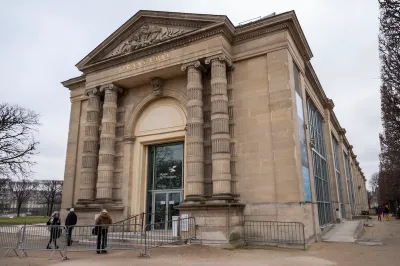
Image Credit: Martin Lelievre/AFP via Getty Images. In 1852 Emperor Napoleon III commissioned architect Auguste Bourgeois to design a building on the terrace of the Tuileries Palace’s Seine-side garden to house orange trees. Louis Visconti, the architect in charge of the Louvre’s renovations, decorated the main doors of this orangery, and Charles Gallois-Poignant sculpted the triangular pediments featuring cornucopias, plants, and corn cobs that top the portals.
In 1921 a group of Water Lilies that Claude Monet had donated to the State was installed at the Orangerie, where they remain to this day. The artist himself was involved in the project, alongside sculptor French Camille Lefèvre, who came up with the idea of two oval rooms forming an infinity symbol.
In 1959 and 1963, the State acquired the Jean Walter and Paul Guillaume collection of Impressionist and Modernist works by way of a donation from Domenica Walter (1898–1977), the widow of both art dealer Paul Guillaume and architect and industrialist Jean Walter. The Musée de l’Orangerie’s most recent rehang in 2020 uses works from this collection to mark a clear transition from Impressionism to the “primitive” Moderns, including Picasso, Derain, Modigliani, and Matisse, among others.
-
Centre Pompidou
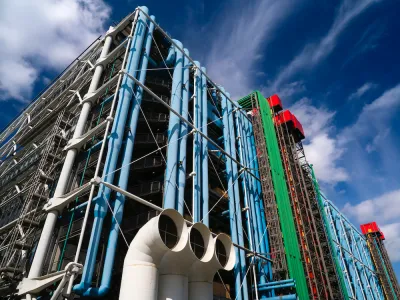
Image Credit: Planet One Images/Universal Images Group via Getty Images. Named after Georges Pompidou, the French president (1969–1974) who commissioned it, the Centre Pompidou is also known as the Beaubourg, the name of its neighborhood in the Marais district of Paris. This institution is home to a public library, a center for music and acoustic research called IRCAM, and to the Musée national d’art moderne, the largest modern art museum in Europe.
When unveiled in 1977, the Pompiou’s high-tech industrial design, with its structural and mechanical elements exposed on its exterior, gave rise to much controversy. These days, the building, the work of architects Richard Rogers, Su Rogers, Renzo Piano, and Gianfranco Franchini, is regarded as iconic. The same is true for its 2010 regional satellite in Metz, France, a curvilinear white building designed by Shigeru Ban and Jean de Gastines.
Exhibitions at both locations draw from a collection of 120,000 works by major 20th-century artists including Alexander Calder, Louise Bourgeois, Niki de Saint Phalle, Pablo Picasso, Anselm Kiefer, Sheila Hicks, and many others. A critical source of funding for the institution are international outposts like the Centre Pompidou Málaga, in Spain, and the Centre Pompidou x West Bund Museum Project, in Shanghai; they were inaugurated in 2015 and 2019, respectively, and another two will open next year, in Brussels and Seoul.
Note: The Centre Pompidou will be closed for renovation from the end of summer 2025 until 2030.
-
Palais de Tokyo
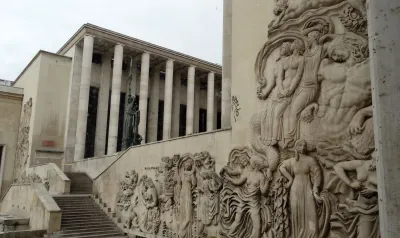
Image Credit: Universal History Archive/Universal Images Group via Getty Images. The Palais de Tokyo occupies the west wing of a building constructed for the 1937 French International Exhibition in Paris. Unlike the east wing, which has always housed the Musée d’art moderne de la Ville de Paris, it has undergone various transformations over time. This is where the collections of the Musée du Luxembourg (French contemporary art) and the Jeu de Paume (foreign contemporary schools) were transferred to create the Musée d’art moderne, which eventually moved to and became the Centre Pompidou in 1976.
Successively home to the Musée d’art et d’essai, the Palais de l’image, the FÉMIS film school, the Institut des hautes études en arts plastiques, the Fonds national d’art contemporain, and the Centre national de la photographie, the west wing was revamped by architects Anne Lacaton and Jean-Philippe Vassal into the Palais de Tokyo, an exhibition center devoted exclusively to contemporary art, the largest in Europe since its inauguration in 2002. In addition to its selective program, the institution is known for featuring a vintage photo booth in its lobby, an oval movie theater, a lush garden designed by Robert Milin, and a mediation space called HAMO that accommodates a wide range of audiences for “artistic and educational activities and events.”
-
Grand Palais
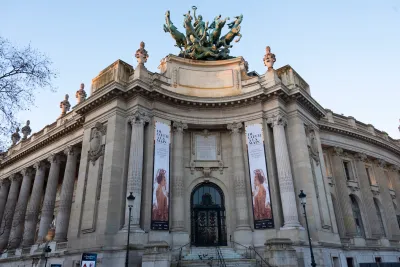
Image Credit: Hans Lucas/AFP via Getty Images. Built for the 1900 Exposition Universelle in a style half Classical and half Baroque, the Grand Palais transformed into a military hospital during World War I and was declared a historic monument in 2000, a distinction that led to the first stage of a renovation project now coming to an end. Closed in 2021 for the restoration, the foundations of this immense multipurpose exhibition hall—known for its blockbuster shows and home to a wide range of events from concerts, light shows on an ice-skating rink, conferences, fashion shows, and art fairs—were reinforced, the deteriorating metal framework of its nave repaired, and the Alexandre III rotunda, which used to house a restaurant, revamped. Reopening gradually since playing home to the Paris 2024 Olympic Games last summer and fall, the Grand Palais hosted the third edition of Art Basel Paris last October for the first time. By midyear 2025 it should once again be fully accessible.
-
Musée Rodin

Image Credit: Yves Forestier/Sygma via Getty Images. The Hôtel Biron, which opened in 1919 as the Musée Rodin, is a perfect example of Parisian rocaille architecture. Drawing some 700,000 visitors a year, it is one of the most popular sites in Paris. This is where Auguste Rodin (1840–1917), the father of modern sculpture, worked in the early 20th century and where most of his oeuvre (6,600 sculptures, 8,000 photographs, as many drawings, and 7,000 objets d’art) is now preserved and presented. The house, started in 1727 by architect Jean Aubert and completed in 1732, belonged at some point to Louise Bénédicte de Bourbon, Louis XIV’s daughter-in-law. In 1908 Rodin rented several rooms there as a studio; by 1911 he occupied the entire building. He bequeathed his collection to the State in 1916, on the condition that the Hôtel Biron become a permanent museum of his work. Today, the property’s 7.4-acre garden, filled with sculptures by the artist, is the ideal place for a romantic stroll. Temporary exhibitions take place in the 19th-century chapel, which was restored in 2005.
-
Musée d’Art Moderne de la Ville de Paris
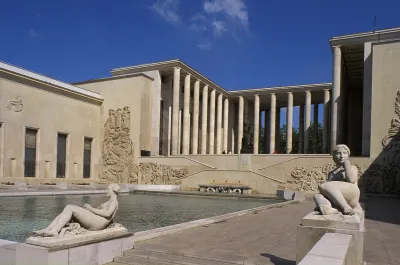
Image Credit: Michel Renaudeau/Gamma-Rapho via Getty Images. Located on the former Quai de Tokio (now the Avenue de New York), the Palais de Tokyo was designed in 1937 by Jean-Claude Dondel and André Aubert to house two separate museums: the Musée d’art moderne de la Ville de Paris and the Musée national d’art moderne. Today only the former, known now as the Musée d’art moderne de Paris, is housed there, in the east wing of the iconic building. Unadorned on the inside but decorated with mythological themes on the outside, the museum holds one of the largest collections of modern and contemporary art in France, with nearly 15,000 works by Picasso, Dufy, Modigliani, Derain, Chagall, Boltanski, Parreno, and many others. The institution is also home to site-specific installations such as the first version of Henri Matisse’s La Danse and Raoul Dufy’s monumental mural La Fée Electricité, donated in 1954 by the artist himself. Since 2007, more than 800 works have entered the holdings, including pieces by contemporary artists Peter Doig, Christopher Wool, Douglas Gordon, Gilles Barbier, and Sturtevant. And more are sure to come.
-
Musée Guimet
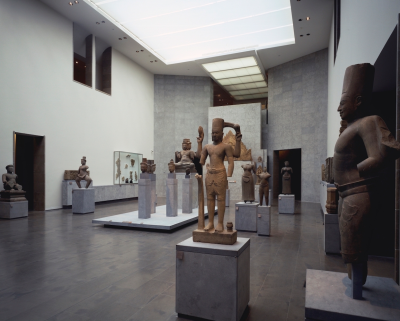
Image Credit: De Agostini/Getty Images. The Musée Guimet started in Lyon in 1879, three years after the French minister of public instruction sent industrialist Émile Guimet to Japan, China, and India to study the religions of the Far East. Guimet brought back many works of art, which were given to the State and transferred to Paris in 1889. Officially the Musée national des arts asiatiques–Guimet, the museum is home to the largest collection of Asian arts in Europe. Renovated in 2001, its spacious, light-filled galleries gather pieces from India, Cambodia, Thailand, Malaysia, Vietnam, China, Pakistan, Nepal, Korea, and Japan. The library includes works on Asian art as well as religion and philosophy. The permanent display occupies five levels, and temporary exhibitions devoted to contemporary artists regularly fill the building’s top-floor rotunda. Daniel Arsham, Chiharu Shiota, Duy Anh Nhan Duc, and Yang Jiechang are among those who have been featured there.
-
Musée Marmottan Monet
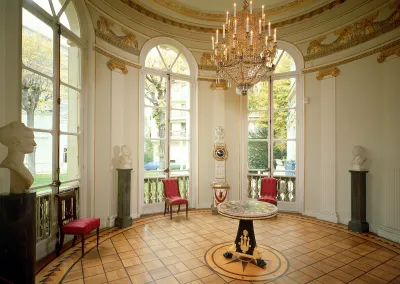
Image Credit: Art Images via Getty Images. The Musée Marmottan Monet is the former residence of François Christophe Edmond Kellerman, the Duke of Valmy, in Passy, a former hamlet absorbed into Paris after the French Revolution. The property comprised a main building and two pavilions. The duke died in 1868, and his widow and daughter sold the home in 1882 to industrialist and art collector Jules Marmottan, who amassed paintings mainly by Italian, Flemish, and German Primitives. In 1883 Marmottan’s treasures passed to his only son, Paul, who thereafter devoted himself to studying history, particularly that of the Napoleonic era, and collecting related art, including marble effigies of the emperor’s family, furniture from the Tuileries Palace, one of Bonaparte’s residences in Paris, and a bed once belonging to Napoleon I. Marmottan bequeathed the family mansion and its collections to the Académie des Beaux-Arts, which took over its management in 1932.
The Musée Marmottan opened in 1934, its affiliation with the Académie spurring donations that included works by French academic painter William Adolphe Bouguereau and naturalist painter Jules Bastien-Lepage. Donations made by Victorine Donop de Monchy, the daughter of collector Georges de Bellio, took the collection in a new direction with the addition of the first Impressionist canvases, among them works by Camille Pissarro, Pierre-Auguste Renoir, and Alfred Sisley, as well as Claude Monet’s famed 1872 painting Impression, Sunrise.
Another bequest that transformed the museum’s holdings was that made by Michel Monet, the painter’s younger son; donated in 1966, it comprised more than a hundred works by the father of Impressionism, including a group of large-scale Water Lilies. Hence the institution’s current name, Musée Marmottan Monet. Thanks to the Rouart family, the museum now also houses the world’s first collection of works by their forebear, Impressionist painter Berthe Morisot, along with drawings and paintings by Edouard Manet, Edgar Degas, and Jean-Baptiste-Camille Corot, forever reconciling the Académie des Beaux-Arts with Impressionism, a movement that was initially deemed no match for great masters.
-
Musée Picasso
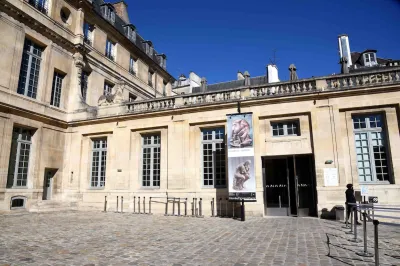
Image Credit: Andia/Universal Images Group via Getty Images. In 1974, one year after Pablo Picasso’s death, the French Secretary of State for Culture selected a city-owned building in the Marais to house and exhibit works by the artist owned by the State, which it had acquired in lieu of estate taxes from the artist’s family. The 17th-century Hôtel Salé had the merit of contrasting with the freshly opened Centre Pompidou, also home to Picasso masterpieces. Architect Roland Simounet, renowned for his work in Algeria, won a competition in 1979 to retrofit the site from the inside out. The Musée national Picasso was inaugurated in October 1985. Extensive renovation and expansion took place between 2009 and 2014, during which time the museum was closed; the work produced an updated space more than twice its former size. The museum’s exhibition spaces are spread over five floors (a lower and four upper levels), and its program has included solo shows by contemporary artists, including Faith Ringgold, Sophie Calle, Farah Atassi, and Paul Smith.
-
Fondation Louis Vuitton
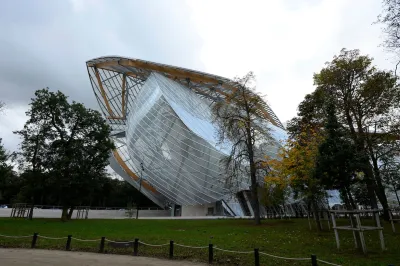
Image Credit: Bertrand Guay/AFP via Getty Images. Some compare it to a cloud. Others to an iceberg, or a beetle. With its 12 glass “sails” and 19,000 panels of fiber-reinforced concrete, the Fondation Louis Vuitton was designed by Canadian-American architect Frank Gehry as a majestic ship anchored in the middle of the Bois de Boulogne, near the Jardin d’Acclimatation. Commissioned in 2012 by Bernard Arnault, CEO of the LVMH group, as a way to support art, culture, and heritage, the imposing glass shell features 11 galleries, including one with a 55-foot ceiling, considered a tribute to Le Corbusier’s Notre-Dame du Haut chapel in Ronchamp. Its architecture dialogues with an impressive collection of contemporary art as well as with ambitious exhibitions devoted to major figures in art history, from Egon Schiele and Claude Monet to Jean-Michel Basquiat and Andy Warhol.
-
Fondation Cartier
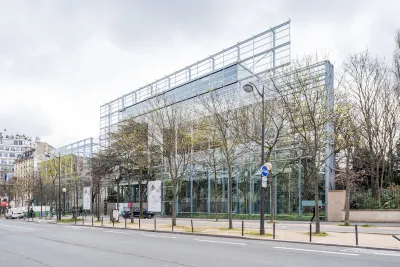
Image Credit: Corbis via Getty Images. In 1984, following sculptor César’s advice, Alain Dominique Perrin, then president of Cartier International, created the Fondation Cartier pour l’art contemporain, making his company the first corporate patron of contemporary art in France. Having amassed 4,000 works by 500 international artists, the foundation moved in 1994 from Jouy-en-Josas, near Versailles, to an open geometric glass and metal “frame” in Paris designed by French architect Jean Nouvel, who is also responsible for the Arab World Institute and the Quai Branly Museum. In 2024 the Fondation Cartier announced its relocation to a Second Empire 19th-century building near the Louvre that Nouvel’s team are currently retrofitting. The site is scheduled to reopen in the fall of 2025.
-
Musée de Cluny
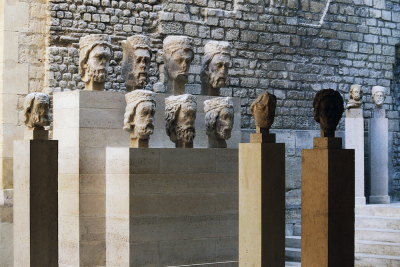
Image Credit: De Agostini via Getty Images. The beating heart of the Latin Quarter (along with the Sorbonne, the Panthéon, and the Luxembourg Gardens), the Musée de Cluny is one of the oldest museums in Paris and the only national institution dedicated to the Middle Ages. It recently went through a major transformation, the most ambitious since it was created in 1843. The museum’s Roman thermal baths and Gothic chapel were restored, and public spaces—the reception area, the ticket office, and the café—were modernized. The new chronological display spans 21 rooms and features a reshuffle of 1,600 works, among which is the unavoidable Dame à la Licorne (The Lady and the Unicorn), a series of six tapestries designed in the mille-fleurs (“thousand flowers”) style in Paris and woven in Flanders. Five of them seem to be depicting the senses of taste, hearing, sight, smell, and touch. The sixth tapestry bears the words “À mon seul désir” (“To my only desire”), an esoteric message that fuels the mystery of this masterpiece.
-
Jeu de Paume
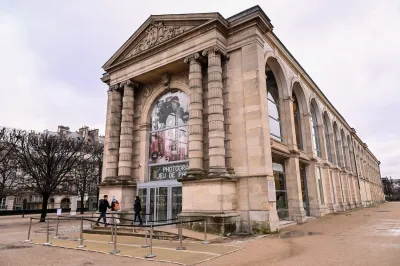
Image Credit: Martin Lelievre/AFP via Getty Images. Last year, the Jeu de Paume celebrated its 20th anniversary as an art center dedicated to images from the 19th, 20th, and 21st centuries, and from photography to cinema to video to installation. But in 1861, when the building was constructed, it was a hall for jeu de paume, the forerunner of tennis, designed by architect Melchior Viraut at the request of Napoleon III. The venue was turned into an exhibition gallery in 1922 and annexed to the Musée du Luxembourg.
During World War II, the Nazis used it as a storage room for looted works of art, which the curatorial assistant at the time, Rose Valland, managed to inventory and eventually help rescue. The Musée du Jeu de Paume was home to Impressionist paintings until the opening of the Musée d’Orsay in 1986. In 1991 the Jeu de Paume became center for modern and contemporary art, and a decade later it merged with the Centre national de la photographie and the Patrimoine photographique. In addition to exhibitions, visitors can enjoy a rich program of screenings, conferences, seminars, and educational activities.
-
Musée du Quai Branly
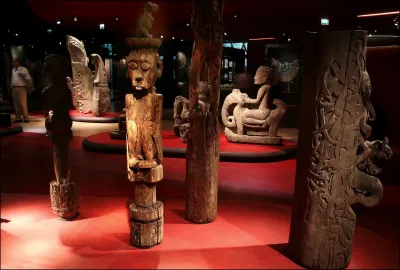
Image Credit: Raphael Gaillarde/Gamma-Rapho via Getty Images. The imposing ivy-coated building standing on the Left Bank of the Seine not far from the Eiffel Tower is the Musée du Quai Branly. Opened in 2006, this glass-and-wood architectural gem was designed by French architect Jean Nouvel to welcome the collections of the Musée de l’Homme (Museum of Mankind) and the Musée National des Arts d’Afrique et d’Océanie. With 360,000 objects, 700,000 iconographical pieces, and more than 200,000 reference works, from the Neolithic period (around 10,000 BC) to the 21st century, it is one of the richest public institutions in Europe dedicated to the study, preservation, and promotion of non-European arts and civilizations. Jointly administered by the French Ministry of Culture and Communication and the Ministry of Higher Education and Research, the Quai Branly museum also serves as a research center.
-
Musée Carnavalet
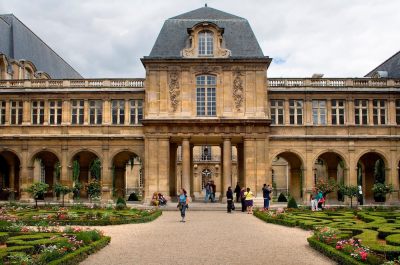
Image Credit: Chris L. Jones/Avalon/Universal Images Group via Getty Images. For everything you’d ever want to know about Paris, this museum devoted to the city and its history is the place to go. Originally built as a town house, the Musée Carnavalet is one of the gems of the Marais, the oldest district in the French capital. The building was designed by architects Pierre Lescot and Jean Goujon before they were called to work on the Louvre Palace, and completed in about 1560 by Jean Bullant. The hôtel particulier owes its name to Madame de Kernevenoy, who acquired it in 1572; Parisians had a tendency to mispronounce her Breton name.
In 1866 the city purchased the Hôtel Carnavalet and started storing what would be the museum’s contents, along with the city archives, in the vaults of the Hôtel de Ville; Communard revolutionaries set that structure afire in 1871, and the collection has been rebuilding ever since. As of 2021, the museum included some 625,000 objects, among them a prehistoric dugout canoe carved from a single block of wood, stained-glass windows from the chapel of the College of Dormans-Beauvais attributed to Baudoin de Soissons and painter Jean de Bruges, Antoine Coysevox’s statue of Louis XIV, and 17th-century wood panels from the study of the Colbert de Villacerf mansion.
-
Institut du monde arabe
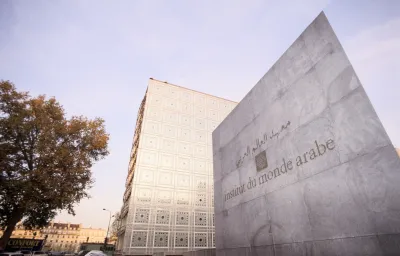
Image Credit: Alexis Duclos/Gamma-Rapho via Getty Images. Since the opening of the Grande Mosquée de Paris in 1926, no other institution had been founded in France to showcase the culture, history, and arts of the Arab world. And so the French government decided in the aftermath of the 1973 oil crisis to create the Institut du monde arabe (IMA, the Arab World Institute). The architectural team, including Jean Nouvel, Pierre Soria, and Gilbert Lèzenes, chose to inlay the building’s facade with light-sensitive moucharabies, openwork partitions with diaphragms that open and close in response to the changing light. Sited in the Latin Quarter by the Seine, the building opened in 1987.
The IMA’s collection started with acquisitions in the fields of ethnography and Islamic and contemporary art. A radical rehang in 2012 offered the public a more dynamic, cross-disciplinary experience reaching back to antiquity. In addition to its permanent display, the museum presents a wide range of blockbuster exhibitions, among them “On the Roads to Samarkand: Wonders of Gold and Silk,” “Perfumes of the Orient,” and “What Palestine Brings to the World.”
-
Petit Palais
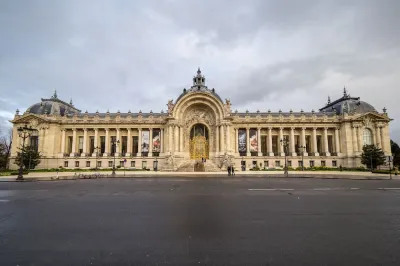
Image Credit: Edward Berthelot/Getty Images. Like its neighbor the Grand Palais, the Petit Palais was built for the 1900 Exposition Universelle. Designed by architect Charles Girault, it is distinguished by its trapezoidal configuration enclosing a colonnaded semicircular garden; decorative murals by Albert Besnard, Fernand Cormon, and Alfred Roll; allegorical ceilings by Ferdinand Humbert (The Intellectual Triumph of Paris) and Georges Picard (The Triumph of Woman); a cupola decorated by Maurice Denis; stained glass windows made in the Lorraine region; and mosaics by Italian master Facchina. On the vaulted ceiling of the garden portico, artist Paul Baudoüin painted an impressive vista of vines interspersed with medallions featuring The Months of the Year and The Hours of the Day and Night.
The Palais is home to 19th- and 20th-century paintings and sculptures acquired by the City of Paris and a collection of premodern art bequeathed in 1902 by the Dutuit brothers. The bequest includes Greek, Roman, Islamic, Chinese, and Japanese works, objects from the Middle Ages, the Renaissance, Flemish and Dutch paintings from the 17th century, manuscripts and books from the 15th and 17th centuries, and 12,000 engravings.
-
Musée de la Vie Romantique
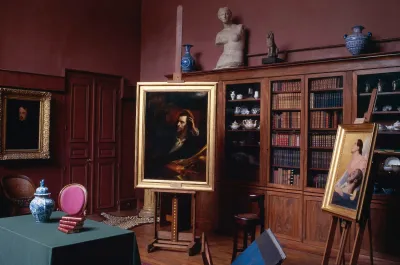
Image Credit: Jarry/Tripelon/Gamma-Rapho via Getty Images. Located in the New Athens district, cradle of 19th-century intellectual and artistic elites, the Musée de la vie romantique is the former home of Dutch-French portrait painter Ary Scheffer (1795–1858), who moved to Paris in 1811. The second level is devoted to him and his contemporaries. The floor below, which pays tribute to the writer George Sand, includes portraits, furniture, and 18th- and 19th-century jewelry. Scheffer hosted salons in this house for the intellectual and creative lights of his day: artist Eugène Delacroix; composers Frédéric Chopin, Franz Liszt, and Gioachino Rossini; opera singer Pauline Viardot; and writers Ivan Turgenev and Charles Dickens. In the studio, he worked alongside his younger brother Hendrik. The latter spaces, now reserved for temporary exhibitions, frame a cobbled courtyard, while the greenhouse, in the garden, is home to a quaint coffee shop whose quiches are a must-try.
-
Musée Gustave Moreau

Image Credit: Thomas Samson/AFP via Getty Images. Another emblematic painter who resided in the New Athens district, in Paris’s 9th arrondissement, is the Symbolist Gustave Moreau (1826–1898), who turned his home into a museum in 1895 with the help of architect Albert Lafon. His parents bought the house in 1852, and shared the second floor (a dining room, one bedroom, a den, a hallway, and an office/library) with him until their passing. Moreau’s studio was originally on the third floor and later on the top floor, accessible via a spiral staircase, still in place today. In 1897 Moreau donated his home and its contents to the State, which did not accept the offer until four years later. The collection consists of 1,300 of the artist’s paintings, watercolors, and sketches, as well as some 5,000 drawings. Among the highlights on view are Jupiter and Semele (1895), Chimera (1884), and The Return of the Argonauts (1890–97), all inspired by Greek mythology.
-
Musée Jacquemart-André
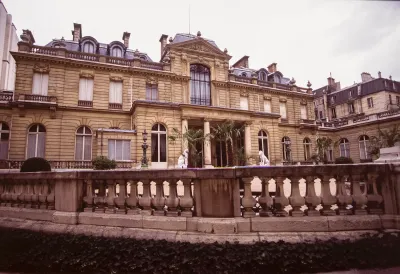
Image Credit: Franck Charel/Gamma-Rapho via Getty Images. A jewel of the 8th arrondissement, the Musée Jacquemart-André occupies the former home of collectors Edouard André and Nélie Jacquemart. Scion of a Protestant banking family, André (1833–1894) married Jacquemart (1841–1912), a well-known society painter, 10 years after she executed his portrait. The two traveled annually to Italy in pursuit of the finest pieces of art. Following André’s death, Jacquemart completed the decoration of their “Italian museum” and headed to Asia to expand her aesthetic horizons. She bequeathed the mansion to the Institut de France, which opened it as a museum in 1913.
The venue is open to the public in its original state, and visitors can see works there by Élisabeth Louise Vigée Le Brun, Vittore Carpaccio, Giovanni Battista Tiepolo, Andrea Mantegna, Jean-Honoré Fragonard, Sandro Botticelli, and Thomas Gainsborough. The museum presents two major temporary exhibitions yearly and runs a quaint tea room, the menu of which subtly refers to the art on view.
-
Versailles
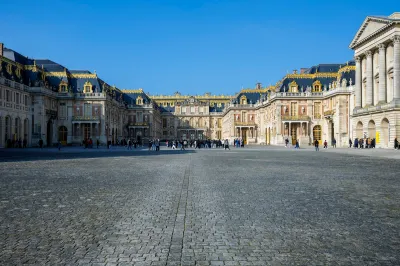
Image Credit: Luc Castel/Getty Images. During the Renaissance, the term “chateau” referred to a luxurious home in a rural location, as opposed to an urban palace. Located just outside Paris, Versailles was only a village when Louis XIV ordered its destruction in 1673 so that his court and government could move there in 1682. After the French Revolution in 1789 led to Louis XVI’s imprisonment and execution, the Château de Versailles forever ceased to be a royal residence. It became the Museum of the History of France in 1837 by order of King Louis-Philippe, who exhibited paintings and sculptures there of figures and events that marked the history of France. This collection grew until the early 20th century, when curator extraordinaire Pierre de Nolhac undertook the revamping of Versailles from history museum to ancien régime palace. In 1979 UNESCO added the 2,300-room, 679,783-square-foot site to its World Heritage list.
The holdings of Versailles number 60,000 works spanning a dozen centuries, from the Middle Ages to the late 1800s. Highlights among the paintings are Veronese’s Feast in the House of Simon, Hyacinthe Rigaud’s Portrait of Louis XIV, Nicolas de Largillière’s Portrait of Voltaire, and Eugène Delacroix’s Battle of Taillebourg. Standouts in terms of sculpture are Bernini’s Portrait of Louis XIV, Jean-Baptiste Tuby’s Apollo Fountain, and Jean-Antoine Houdon’s Bust of King Louis XVI, among others.

